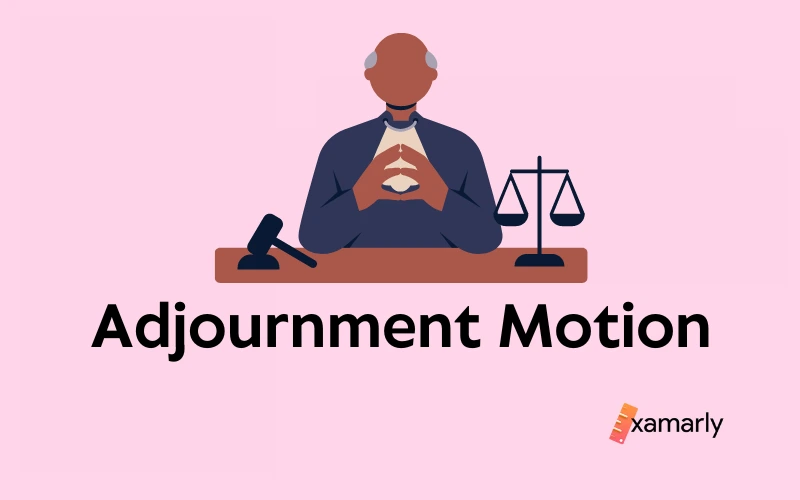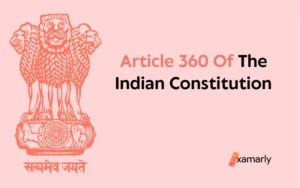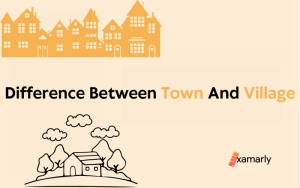Adjournment motions are an essential tool in parliamentary proceedings, allowing members to temporarily suspend the business of the house and adjourn it to a later date. These motions serve as a way for members to address pressing issues or to take a break from the proceedings.
In this blog, you will learn about the intricacies of Adjournment motions, exploring their purpose, procedure, and significance in the functioning of legislative bodies. This blog is an integral part of the preparation checklist of a UPSC aspirant.
While studying for the IAS Exam, aspirants will find this topic quite useful. This detailed study will provide a comprehensive overview of Adjournment motions and the role they play in the democratic process.
- What is an Adjournment Motion?
- Scope of an Adjournment Motion
- The Procedure of Notice of an Adjournment Motion
- Time of Discussion of an Adjournment Motion
- Restrictions on an Adjournment Motion
- Types of Motion in Parliament
- Conclusion
- FAQ About Adjournment Motion
- How many different types of motions are there in Parliament?
- Why is an Adjournment motion used?
- How is an Adjournment motion proposed?
- Can an Adjournment motion be opposed?
- What happens after an Adjournment motion is passed?
- How does an Adjournment motion affect the legislative process?
- Can an Adjournment motion be used multiple times in a single session?
What is an Adjournment Motion?
Adjournment motion meaning: The procedure for adjournment of the House’s business for the purpose of considering a specific topic of urgent public significance, which can be moved with the speaker’s approval, is known as an Adjournment motion.
When introducing an Adjournment motion, the purpose is to draw the attention of the House to a definite matter of public importance which may result in serious consequences when discussed with proper notice.
Adjournment motions must have at least 50 votes, which means that the entire House must suspend its business in order to consider the motion.
Unlike a quorum-call motion, an Adjournment Motion must raise only one matter of urgency, be definite, brief, and not a series of questions that could be answered in a distinct motion.
When a motion to adjourn is made in the House of Commons, the Speaker cannot use his or her authority to adjourn the meeting. Therefore, it is important to determine whether the Adjournment motion is a privileged motion or non-privileged.
It is also important to note that this motion must be factual, urgent, and of public importance. In addition, a motion should not be too general, nor can it raise a question of privilege.
This motion entails a measure of censure directed toward the government. As a result, the Rajya Sabha is not permitted to employ this device. In the event that an Adjournment motion is passed, the House is automatically adjourned.
Adjournment motions must be unanimously approved by the members of a body. Adopting an order of business or a program is required for this type of motion. The order of business lays out how the day will run, which includes what items will be discussed.
After the general order of business has been adopted, a motion for an adjournment may be made to extend the time for consideration of the pending question. Since it disrupts the House’s routine operations, it is recognized as an extraordinary device.
Scope of an Adjournment Motion
The motion’s subject matter must specifically identify the failure of the Government of India to carry out its responsibilities in line with the provisions of the Constitution and Law, whether it be a direct or indirect link to the conduct or default on the part of the Union Government.
A matter that falls under the jurisdiction of a State Government is not admissible, but one that involves constitutional changes in a State or atrocities against the Scheduled Castes and Scheduled Tribes, as well as other weaker groups of society, and which brings the Union Government into the picture, may be given merit-based consideration for admission.
The Chair has complete authority over whether to refuse consent, and he or she is not required to provide any justifications.
The Procedure of Notice of an Adjournment Motion
- The Parliamentary Notice Office should receive all copies of the notice.
- For each person sitting, a member can only give one Adjournment motion notice.
- If more than one member signs a notification, it is believed to have been given exclusively by the first signing.
- This motion is not considered on the day of the President’s address, as is customary. Notices for that day’s sitting are handled as notices for the following sitting.
- Every notice must be issued in writing.
- To be admitted, it needs the support of 50 members.
- For the sitting for which the notices are valid, a ballot is conducted to validate the relative priority of all notices received on the same issue.
- Before providing or refusing consent, the Lok Sabha Speaker may read the motion’s notice and hear a brief statement of facts from the Minister and/or members concerned, and then make a decision on the motion’s admissibility.
Time of Discussion of an Adjournment Motion
- The motion is generally taken up at 16.00 hours.
- Unless the debate ends earlier, the time of adjournment provided for discussion is not less than two and a half hours.
- The Speaker does not have the authority to adjourn the House for the day while the motion is being debated since the House has the authority to decide on its adjournment at that period.
- Even if a request is made to that effect, the Speaker cannot postpone the voting to the following session. Before the House adjourns, the motion must be resolved.
Restrictions on an Adjournment Motion
The ability to move a motion to adjourn the House’s business is subject to the following limitations:
- It is also important to note that this motion must be factual, urgent, and of public importance
- It should not address more than one issue.
- It should be limited to a specific recent occurrence.
- A motion should not be too general, nor can it raise a question of privilege.
- It should not bring up a topic that has already been discussed in the same session.
- It should not deal with any issues that are currently being decided by the court.
- It should not raise any issues that could be addressed in a separate motion.
Types of Motion in Parliament
Different types of motions are listed below.
- Privilege Motion
- Censure Motion
- No-Confidence Motion
- Call-Attention Motion
- Cut Motions
- No-Day-Yet-Named Motion
- Motion of Thanks
Conclusion
Through this blog, you learnt that an Adjournment motion is an extraordinary procedure that, if approved, causes the House to adjourn from its regularly scheduled business in order to debate a specific issue of urgent public significance.
The primary object of an Adjournment motion is to bring Lok Sabha’s attention to a recent issue of urgent public interest that has significant consequences and for which a motion or a resolution with adequate notice will be too late.
FAQ About Adjournment Motion
How many different types of motions are there in Parliament?
The motions made by members to start debates on various topics fall into three types. Substantive motion, substitute motion, and subsidiary motion are the three types of motion.
Why is an Adjournment motion used?
Adjournment motions are used for a variety of reasons, including to address pressing issues that require immediate attention, to allow for further discussion on a particular topic, or to provide a break from the proceedings.
How is an Adjournment motion proposed?
An Adjournment motion is typically proposed by a member of the legislative body and is subject to a vote. If a majority of members vote in favour of the motion, the house is adjourned.
Can an Adjournment motion be opposed?
Yes, an Adjournment motion can be opposed by any member of the legislative body. If an opposition is raised, the motion is put to a vote and must receive a majority vote in favour in order to pass.
What happens after an Adjournment motion is passed?
Once an Adjournment motion is passed, the business of the house is temporarily suspended and the house is adjourned to a later date. The exact date of the next session is determined by the Speaker of the House or the presiding officer.
How does an Adjournment motion affect the legislative process?
Adjournment motions have a significant impact on the legislative process as they allow members to address pressing issues and provide a break from the proceedings. They also provide an opportunity for further discussion on a particular topic and can influence the outcome of legislative decisions.
Can an Adjournment motion be used multiple times in a single session?
Yes, an Adjournment motion can be used multiple times in a single session, depending on the needs and priorities of the members. However, it is typically used sparingly in order to ensure the efficient functioning of the legislative body.






